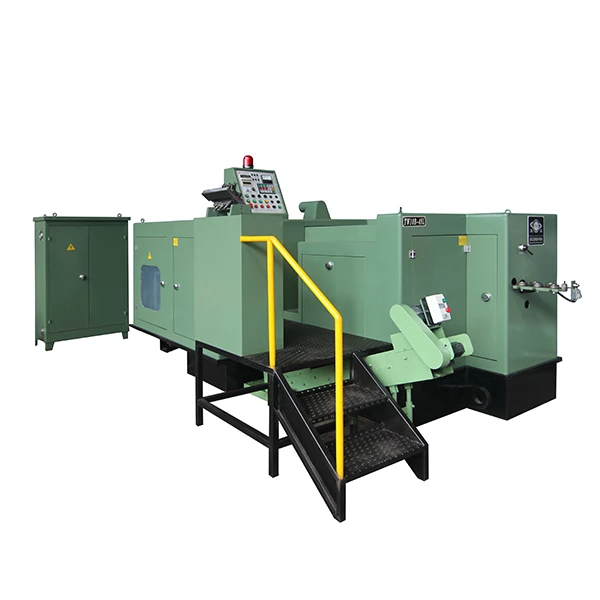Cold Header Troubleshooting Guide
As a key piece of equipment in metal forming, the stability of bolt forging machine directly impacts production efficiency and product quality. However, over time, bolt former may experience various faults, impacting the normal operation of the production line. To ensure continued stable operation, timely and effective troubleshooting is crucial.
Common Fault Types and Diagnosis Methods
1. Electrical System Fault
-
Symptoms: The machine will not start, the control panel display is blank, or the alarm light remains on.
-
Possible Causes:
-
Unstable power supply voltage or power outage.
-
Aging or damaged electrical components, such as contactors and relays.
-
Poor contact or short circuit in the control circuit.
-
-
Troubleshooting Methods:
-
Check the power input voltage for normal operation and ensure a stable power supply.
-
Inspect each electrical component individually and replace if necessary.
-
Use a multimeter to check the continuity of the control circuit to eliminate any potential problems.
-
2. Hydraulic System Abnormality
-
Symptoms: Insufficient pressure, sluggish operation, unusual noise, etc.
-
Possible Causes:
-
Hydraulic oil contamination or low oil level.
-
Hydraulic pump or valve malfunction.
-
Pipeline leaks or loose joints.
-
-
Troubleshooting:
-
Regularly replace the hydraulic oil to keep it clean.
-
Check the operating condition of the hydraulic pump and valves, and repair or replace them if necessary.
-
Perform a thorough inspection of the piping and promptly address any leaks.
-
3. Mechanical Structure Problems
-
Symptoms: Abnormal vibration, increased noise, and worn components.
-
Possible Causes:
-
Long-term lack of maintenance leading to component wear.
-
Insufficient lubrication or poor-quality lubricant.
-
Improper installation or loose components.
-
-
Troubleshooting:
-
Regularly inspect and maintain mechanical components, and replace worn parts promptly.
-
Use lubricants that meet requirements and maintain good lubrication.
-
Ensure the equipment is securely installed and regularly check the tightness of fasteners.
-
4. Control System Failure
-
Symptoms: Abnormal program operation, incorrect parameter settings, unresponsive operation interface, etc.
-
Possible Causes:
-
Program software failure or virus infection.
-
Operator error or improper parameter setting.
-
Control system hardware failure.
-
-
Troubleshooting Methods:
-
Regularly back up program data to prevent data loss.
-
Provide regular operator training to ensure correct operation.
-
Inspect the control system hardware and promptly replace any faults.
-
Preventive Measures and Maintenance Recommendations
-
Regular Inspections: Establish a regular equipment inspection system to ensure all indicators are normal.
-
Personnel Training: Provide regular technical training to operators to improve their ability to identify and resolve faults.
-
Spare Parts Management: Establish a comprehensive spare parts management system to ensure timely replacement of critical components.
-
Data Recording: Maintain equipment operation and maintenance records to provide a basis for fault analysis.
Ensure Timely Troubleshooting
By establishing a comprehensive maintenance system, regular inspections, and training, you can minimize downtime and improve customer satisfaction. Improving operator skills is also critical to ensuring stable equipment operation. Always refer to the manufacturer's instructions for specific troubleshooting steps and maintenance procedures for bolt former machine.

 English
English اللغة العربية
اللغة العربية Español
Español Português
Português Русский
Русский  Türkçe
Türkçe